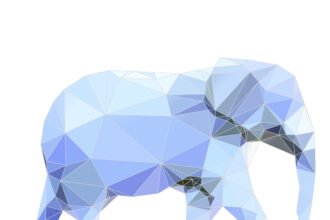A couple of weekends ago, I visited Palmaz Vineyards, a couple of hours drive north of the Revolution offices in the Coombesville district of Napa Valley.
A couple of weekends ago, I visited Palmaz Vineyards, a couple of hours drive north of the Revolution offices in the Coombesville district of Napa Valley. We went there not just because of their reputation for excellent wines, but also because I’d heard that they have a state-of-the-art system for collecting data about every aspect of the winemaking process, and I wanted to see the intersection of data science with viticulture and oenology. On that score I wasn’t disappointed: the tour we had was nothing short of fascinating.
First: the vines themselves. All of the grapes are estate grown, and this is where the data collection process begins.
Not only are the soil types and plot aspects carefully catalogued, but as the vines are growing they are continually monitored by fieldworkers armed with custom iPhone apps linked to temperature, humidity and other environmental sensors. Grape leaves are burned in a special instrument to measure moisture (and this information is also collected). In addition, several times a season a light plane flies over the entire estate with a high-resolution infrared sensor, to measure the “respiration” of the vines. All of these process generate a massive amount of data, all linked to individual plot, varietal, clone and even individual plants, thanks to GPS location.
Next step: winemaking. Palmaz uses a “gravity flow” system to make their wines: the high pressures associated with pumping can be detrimental to the quality of the wine. So the entire production facility is built as a series of enormous high-tech caves dug into the mountain (and bears no small resemblance to the lair of a James Bond villian). Each stage of the wine making process is stacked one atop the other: crush at the top level, which flows down into fermentation tanks, and then down further to barrels for maturation, and finally to bottling.
(On the left, grape juice flows down into a rotating series of tanks for temporary storage before flowing down into fermentation tanks on the level seen below on the right.)
During this process every aspect of the new wine is monitored by custom-built sensor software, which can be controlled by a touch-screen application, or even remotely via iPad:
This process introduces even more data about the wine: time series of temperature, pH levels, and many other factors during the winemaking process. When the wine is put into barrels, it’s never blended. That way, the unique factors (i.e. data) of the growing and winemaking can be associated with one specific barrel of wine:
In fact, the barrel itself adds a few extra variables to the equation: the cooperage, wood, toasting and length of aging are all sources of variation in the winemaking process. All of this is linked to a data record, identified by a unique code on each barrel.
Of course, winemaking is a subjective process, and much of the art and skill comes in the final part of the process: blending. Even for a 100% Cabernet estate vintage wine, there is still the opportunity to select from individual barrels of the “same” wine, which may have been exposed to slightly different environmental and production factors. Of course, while each blend is subjectively created according to the winemaker’s vision, the barrels that make up each blend is known — adding yet more data to the picture.
But what can winemakers actually do with a wealth of data like this? Some in the industry are skeptical of bringing so much technology to what has traditionally been an artisinal process. Randy Ullom, winemaker at Kendall-Jackson, said this:
“Conceptually, it’s a great idea, being able to measure what’s going on inside the grape,” Ullom says. But such methods “leave you with a phenomenal amount of data, and then what do you do with it?” he asks. “The variables [involved in making wine] are too numerous to come up with anything worthwhile at the end of the day.”
But making sense of numerious variables in massive data sets is what data scientists do every day. Imagine what a winemaker could do with an better understanding of how these factors influence volume produced, revenue from wine sales … or even the Parker score? It seems to me that a skilled winemaker armed with some in-depth analysis of such a rich data source would be able to turn out some mighty fine wines. Wines like these:
If you’re ever in the Napa Valley, I thoroughly recommend dropping by Palmaz for a tour. You won’t be disappointed.






